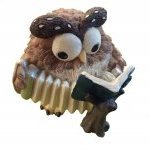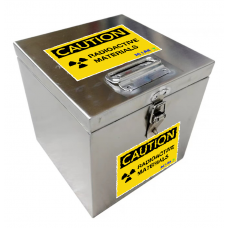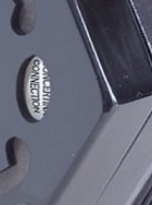-
Posts
2,061 -
Joined
-
Last visited
Everything posted by Don Taylor
-

Need some help comparing hybrid concertinas
Don Taylor replied to Thresher-shark's topic in General Concertina Discussion
I have owned both Morse and Edgley concertinas, they were both very well made and I think it would take many, many years of playing before either of them required any work on them that you could not do yourself. I think that I would give the edge to to Edgley (pun intended) as the reeds are held in by screws instead of accordion wax and Frank Edgley provides a guide on how to fix minor problems on his concertinas. That, plus he is still in business whereas the Button Box, the maker of the Morse concertinas, recently closed down. -
David H. If Saxon could convert your samples into a .sf2 or a .sfx file (soundfont files) then these can be played in Musescore on Windows, Mac or Linux. Musescore can import abc files fairly painlessly so it would then be possible to 'play' an abc file with your samples.
- 7 replies
-
- vst sample library production
- daw
-
(and 2 more)
Tagged with:
-
Neither of these (the Elise and the Trinity college) are baritone ECs (English Concertinas) as played by David Coffin. The Elise is a Hayden duet with a lowest note of the C below middle C, I am not sure which Trinity College concertina you are referencing - is it an EC or an Anglo? Do you have any idea of the range of your voice and what keys you are comfortable singing in? I ask because all of the entry-level concertinas have a limited range and limited keys so you had better be careful to pick one that would work for your voice. David Coffin's EC is probably worth way north of $5,000 and there is a reason for that high price tag vs. the price you want to pay for an entry-level concertina - playability, tone, build quality and the sheer rarity of baritone ECs. Both the Elise and the Trinity College concertinas are made in China, so much would depend upon how good the pre- and after- sales service would be. Since you are in the US then I think that you would be better off with something from the Concertina Connection.
-
If it is a new Stagi than I do not think that you have anything to worry about for a few years, but eventuallly some black rubber sleeves that are on each button to hold it vertical and to stop it falling off inside the concertina will need replacing as they age and crumble. Maybe Stagi are using something better these days, but they used to use a soft, black rubber that did not age well. Replacing these is an easy, if somewhat tedious, process and you can use almost any sort of tubing that will fit. Neoprene tubing will probably outlive you! Here is picture: Here is a link to the article that Ken referred to: https://www.concertina.net/gs_stagirepair.html
- 7 replies
-
- 1
-

-
- stagi concertinas
- stagi
-
(and 1 more)
Tagged with:
-
Reading through the Harmonized Tarif documents (note that each importing country's documents will be different) make you realise why it often takes years to negotiate trade agreements - I am thinking of the so far almost non-existant trade agreements negotiated by post-Brexit UK. I also suspect that once they get down to negotiating things like cymbols vs. drums then it probably depends more upon how close to lunchtime it is rather than the relative merits of one instrument vs. another.
-
Try the original seller, the Concertina Connection, as they often have used instruments for sale that have been traded in against a better model in their range.
-
Musescore uses Fluidsynth internally and you can cut and paste ABC code into the abcimpex (https://musescore.org/en/project/abc-importexport) add-on so you could play ABC code using a concertina sound font that way ...
-
David: I suspect that this is a question for Paul Rosen and I also suspect that the answer will be that he uses whatever the default sound fonts are for the underlying OS on your computer. In the case of Windows they are truly awful and cannot be changed (at least not by me and I have tried several times). But, I was told that it is possible to get Fluidsynth installed as the default midi player on a Mac, in which case you can install Phil Taylor's concertina sound font and use it in EasyABC and Paul Rosen's player. I do not have a Mac so I cannot tell you if this is so, but maybe one of the Mac experts here can try it.
-

Action Board Crack
Don Taylor replied to Stephen DOUGLASS's topic in Instrument Construction & Repair
If you are feeling really paranoid about humidity then you can also buy little bluetooth humidistats that will fit in the concertina case along with its little humidifier. You can then monitor the humidity inside the case from your phone without opening the case. -
Fair does! You caught me, copper.
-
The OP asked about upgrading from an Elise to a more capable Hayden, not switching from an Elise to a Crane, Maccann or a Jeffries. FWIW. I have (twice!) bought Cranes when wanting to upgrade to a concertina reeded instrument. It is probably just me, but it messed up my mind for playing either instrument! I decided that I had to stick to one or the other and I strongly preferred the Hayden layout to the Crane layout even though I preferred the sound of the New Model Crane. So, I have a nice 55B Lachenal New Model Crane that I really must get around to tidying up ready for selling.
-
But that is all that most folks want to play on a concertina! If you want a button instrument with reeds that is much larger and more capable than a concertina then maybe a CBA would make more sense. But then the compromise is size and weight. The charm, for me, in the concertina has always been its small size - maybe that is not rational, but I doubt that I am alone in that feeling.
-
I contacted Edward Jay a couple of months ago about making me a small 46 button Hayden. He was not interested, he only seemed to want to make his large 74(!!!) button Hayden.
-
It also comes with the better Wakker bellows as standard and a hard shell case for $2,990. A Troubadour with those desirable options will cost you $2,240 (1,750 + 395 + 95). Unless the small size of the Troubadour is really, really important to you then I think the extra $750 is well worth it.
-
Looks like a Crane to me on both sides, that button in the 6th column is not unusual in large Cranes. If I played Crane then I would want this instrument. See:
-
Kebab skewer? I suspect that your concertina will have an action that is based on what has been called the Stagi action. If so then the buttons will have a little sleeve of rubber tubing at their base. If this tubing has perished, which happens over time, then the buttons flop about and become even more tricky to get back in place. In this case, you will need to replace the tubing. As long as it is the right size then almost anything will do. If you need to go and buy something then the neoprene tubing used for fuel lines in model airplanes will work very well and be long lasting.
-
It should be user repairable/swappable. I suspect that your concertina actually uses accordion reeds and they are probably waxed in place - without pictures of the internals we cannot be sure, but I think all of the Chinese-built concertinas use waxed in accordion reeds. You are going to have to take the end off and identify which are the two reed plates that need swapping, make sure that they are the same size. If they are different then you are screwed. If they are the same, then you can carefully cut through the wax around the plates, prise out the reeds and swap them over. You then need to remelt the wax around the reed plates to seal them in place. There are various techniques to do this, I use a controllable heat soldering iron on its lowest setting, you can use a heated screwdriver tip, blade or a knitting needle. If the wax smokes then your iron/blade is too hot. You probably will not be able to make a really neat job of this with these techniques, but it should be functional. There are lots of Youtube videos about waxing in accordion reeds, worth watching some of them. The fiddliest job is going to be getting the end back on again with all the buttons back in their holes. Try holding the concertina with the buttons pointing down and then offer up the end from underneath. Patience will be required but cursing also helps... Added later: This link from the Concertina Connection is intended to show how to upgrade and replace the reeds in their beginner level concertinas (probably made in the same factory as your EC). It is useful to show you what to do to swap your reeds. You should ignore the bits about reducing the chamber sizes.
-
Łukasz: Did you do this on both sides of the concertina? Maybe both at the same time?
-

Can you help identify this concertina?
Don Taylor replied to jackly's topic in General Concertina Discussion
-

Can you help identify this concertina?
Don Taylor replied to jackly's topic in General Concertina Discussion
It looks like a Concertina Connection Jackie (treble) or a Jack (baritone) English concertina, so no, not an Anglo - https://www.concertinaconnection.com/jackie-jack.htm The Jack and the Jackie are made in China for the Concertina Connection (CC) and they are made to decent specs for an entry level EC, in particular they have a proper riveted action mechanism. But, the Chinese factory also made an identical looking (on the outside) concertina with a much cheaper action mechanism and they sold this for much less than the CC model. If it is a genuine CC model then if you ever decide you want to upgrade to a better concertina then CC will take your concertina in part-exchange at the the original full price against a better model. -
I imagine that you can probably get a suitable reed that will fit, but even if it is tuned to D then you are likely going to need it touch tuned for your instrument. If this is something that you are prepared to do yourself then you could try Concertina Spares in the UK or Greg Jowaisas in the US. I can also recommend Greg if you need the job done for you. I think that there is someone on the forum in Toronto who does repairs, but I cannot remember the name right now.
-

Helpful (I hope!) learning strategy
Don Taylor replied to paaudio's topic in General Concertina Discussion
You might want to hold off on Musescore 4 and, especially, MuseHub for a while: https://www.reddit.com/r/Musescore/comments/102iqmf/is_musehub_malware/ https://musescore.org/en/node/337673 https://www.thewellnews.com/technology/muse-group-to-revise-audacity-privacy-policy-following-spyware-uproar/ It is very confusing as to what Musehub actually does, Musescore says it handles automatice updates and downloading of sound files. I am happy to do both of those things myself. As a long-term user of Musescore, I have had a quesy feeling about the corporate background to the deal between the open source organization Musescore.org and the for-profit Musescore.com - which is actually the Russia-based Muse Group that has been steadily aquiring open source music applications. I have never been satisfied with the explanations given on the Musescore forums. If you want Musescore 4 then you can download it from Musescore.org without Musehub. Personally, I have decided to hold off on updating from Musescore 3 at least for the timebeing. Musescore 3 is very good already and I have not seen any new features in 4 that make me want to upgrade. If you are as paranoid as me then I recommend downloading both Musescore 3 and, if you want it, Audacity, from https://portableapps.com/. I get most of the Windows applications that I use from Portableapps.com, they are mostly open source apps that have been reviewed and re-factored and I trust the site much more than I do Musecore.org and especially Musescore.com. -

Helpful (I hope!) learning strategy
Don Taylor replied to paaudio's topic in General Concertina Discussion
Good description, but why do you use section markers rather than measure markers to delineate the separate measures? -

Square vs hexagonal (or octagonal) bellows
Don Taylor replied to Don Taylor's topic in General Concertina Discussion
Thanks for all of these thoughts. My takeaway is that square works well for a small concertina - 6" or so, but not so well for a larger box. I had hoped that Edward Jay might be interested in building a small, square Hayden with as many buttons as possible but he seems to want to focus on bigger boxes. A pity as the only small Hayden currently available is the Concertina Connection Troubadour and that simply does not have enough buttons on the LHS.





